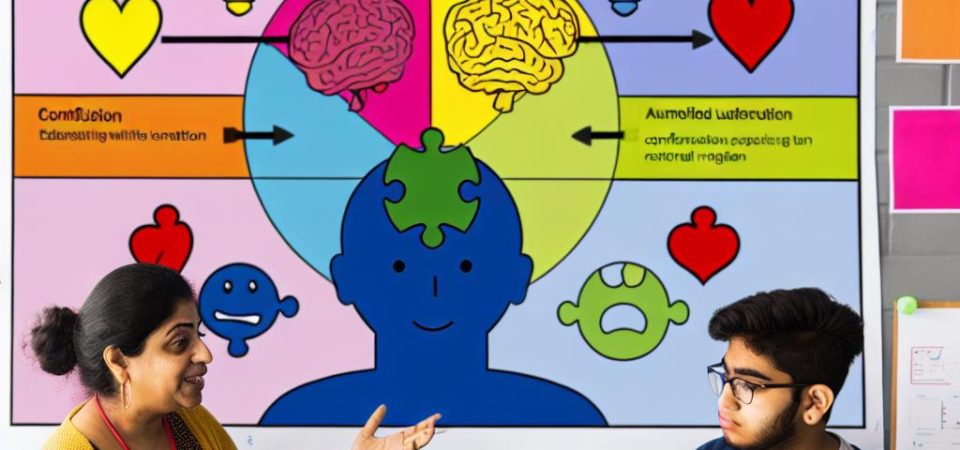Understanding Autism and Emotional Regulation
Autism Spectrum Disorder (ASD) is a complex developmental condition that manifests with a range of difficulties primarily in social communication and interaction. It is often accompanied by restricted, repetitive patterns of behavior, interests, or activities. A notable characteristic of autism is the challenge many individuals face with emotional regulation. This document delves into the intricate relationship between autism and emotional regulation, providing insights into the underlying causes of these challenges and outlining strategies for support.
What is Emotional Regulation?
Emotional regulation is a pivotal aspect of human psychology, encompassing the processes by which individuals influence their emotions—how they experience and express them. It includes the capacity to remain aware of one’s emotions, to modulate emotional responses appropriately, and to employ strategies effectively to manage negative or distressing emotions. For those on the autism spectrum, these processes pose significant challenges, which can have far-reaching implications on daily interactions and the individual’s general well-being.
Challenges in Emotional Regulation for Individuals with Autism
Neurological Differences: Individuals with autism often exhibit neurological differences that can profoundly affect how emotions are processed and regulated. These neurological variances may manifest as heightened sensitivity to sensory stimuli or as difficulties in comprehending social cues, which complicates the processes of emotional regulation. Such differences are primarily rooted in the brain’s structure and function, affecting areas responsible for emotion processing and executive functioning.
Difficulty in Identifying Emotions: Another layer of complexity for many individuals with autism is the difficulty in identifying and labeling their own emotions, as well as the emotions of others. This challenge, known as alexithymia, can lead to frequent misunderstandings or inappropriate emotional reactions due to a lack of emotional awareness or misinterpretation of emotional cues in social interactions.
Communication Barriers: Communication difficulties are a core symptom of autism and can significantly exacerbate challenges related to emotional expression. Issues such as limited verbal skills or difficulties with non-verbal communication—such as facial expressions, body language, or tone of voice—can impede the ability to express emotions in a clear and socially acceptable manner. These barriers can lead to frustration and heightened emotional responses when feelings are not adequately communicated or understood by others.
Strategies to Support Emotional Regulation
Despite the inherent challenges, several strategies have been identified and proven effective in aiding individuals with autism to better regulate their emotions:
Structured Environment: Creating a predictable and structured environment is a vital strategy that can have a calming effect on individuals with autism. By establishing clear routines and expectations, individuals often experience reduced anxiety, which in turn facilitates improved emotional management. Consistent schedules and known patterns can provide a sense of security and stability, thus helping minimize emotional dysregulation.
Visual Supports: Visual aids are highly effective tools for assisting individuals with autism in recognizing and expressing emotions. Items such as emotion cards, social stories, or pictorial representations of different emotional states can serve as valuable references for identifying how one might be feeling and choosing appropriate responses. Visual supports can bridge gaps in understanding and provide a clear framework for emotional recognition and expression.
Mindfulness and Relaxation Techniques: Incorporating practices that promote mindfulness and relaxation can significantly aid stress management and enhance emotional regulation for individuals with autism. Techniques such as deep breathing exercises, meditation, or engaging in sensory activities can help mitigate stress responses and enable individuals to remain calm and centered during challenging situations. These practices encourage a focus on the present moment, which can help reduce anxiety and improve emotional control.
Conclusion
An in-depth understanding of the unique challenges that individuals with autism face regarding emotional regulation is integral to providing effective support. By recognizing and implementing strategies tailored to the diverse needs of individuals on the autism spectrum, we can contribute significantly to fostering enhanced emotional awareness and regulation. Continual learning and access to resources focused on autism research and support are vital components in supporting those with autism effectively. For further information on autism and emotional regulation, it is beneficial to explore reputable sources such as Autism Speaks, which offer extensive information and guidance on autism.
